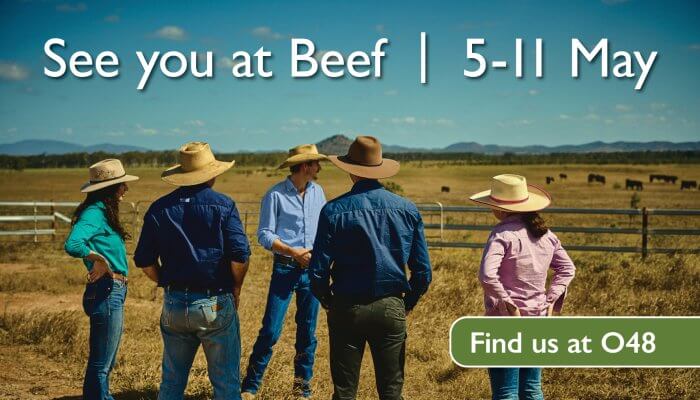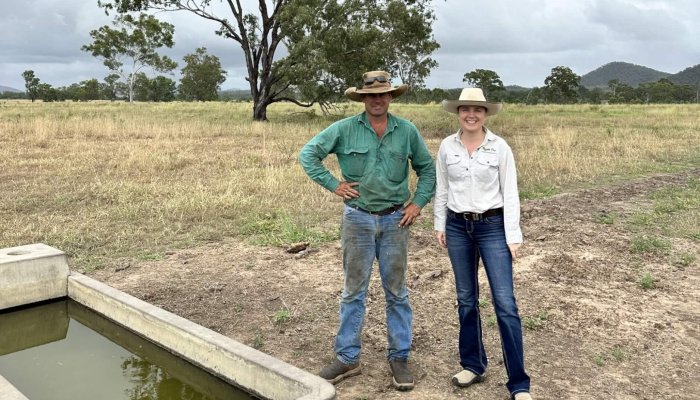Resources library
Resources
The benefits of canopy cover in grazing enterprises
Trees - the root of productivity
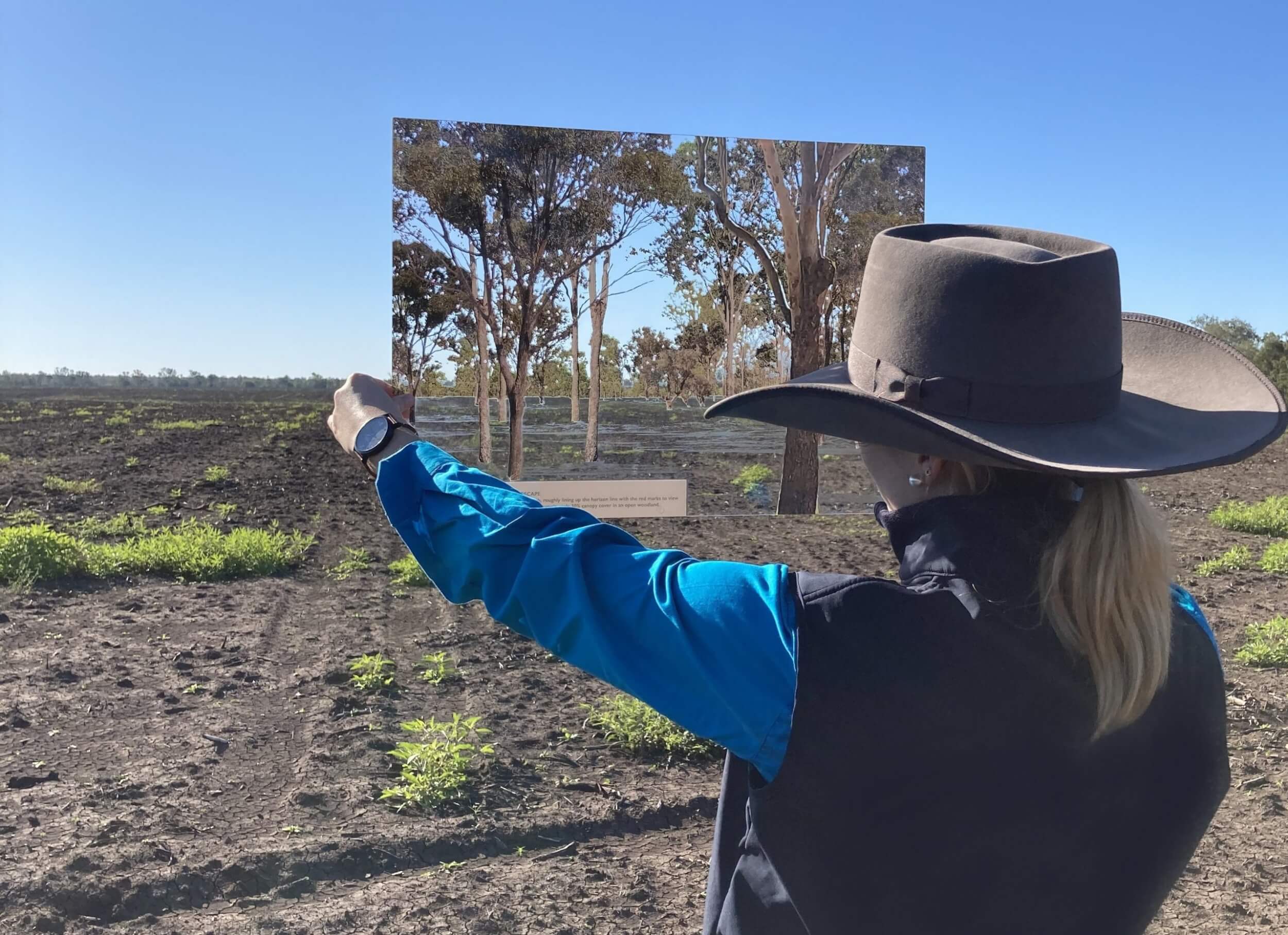
Native trees in grazing paddocks are providing central Queensland landholders with a variety of benefits. Keeping a 30% to 40% canopy cover on grazing land is helping local graziers improve their productivity and land condition. This flyer illustrates a few of the many benefits that native trees provide.
15/06/2020
Improving soil health with Nicole Masters
Soils for Success Workshop Summary

To help central Queensland growers and graziers improve their soil health, FBA brought the internationally acclaimed soil expert Nicole Masters to the region. Nicole Masters is an independent agroecologist, systems thinker and educator. With over 20 years’ experience, she is a knowledgeable and dynamic speaker on the topic of soil health. Watch this video to learn more about Nicole and the workshop. If you want to know more about improving soils health read our blog or get in contact with one of our Land Management Officers (07 4999 2800).
22/04/2020
Brigalow Belt North Fire Management Guidelines
Brigalow Belt North Fire Management Guidelines
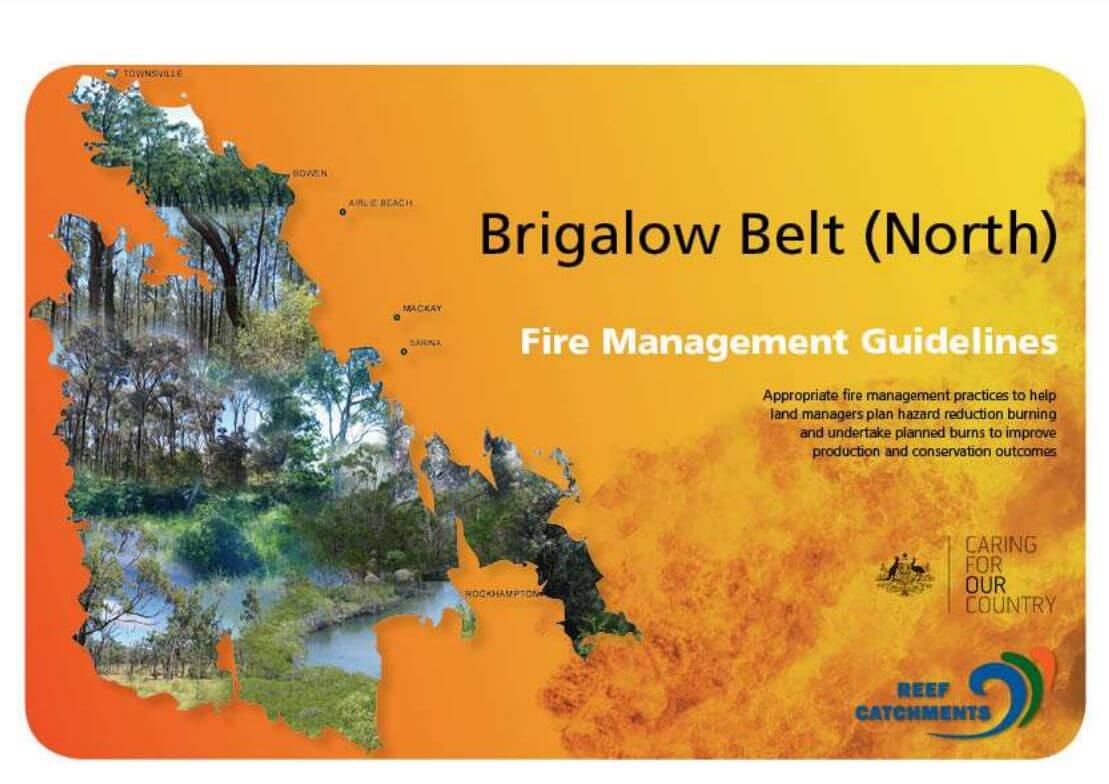
Appropriate fire management practices to help land managers plan hazard reduction burning and undertake planned burns to improve production and conservation outcomes.
15/07/2019
Broader Brigalow Belt South Fire Management Guidelines
Broader Brigalow Belt South Fire Management Guidelines

Appropriate fire management practices to help land managers plan hazard reduction burning and undertake planned burns to improve production and conservation outcomes.
15/07/2019
How to make Stick Rake Lines (Contour Barriers)
How to make Stick Rake Lines (Contour Barriers)
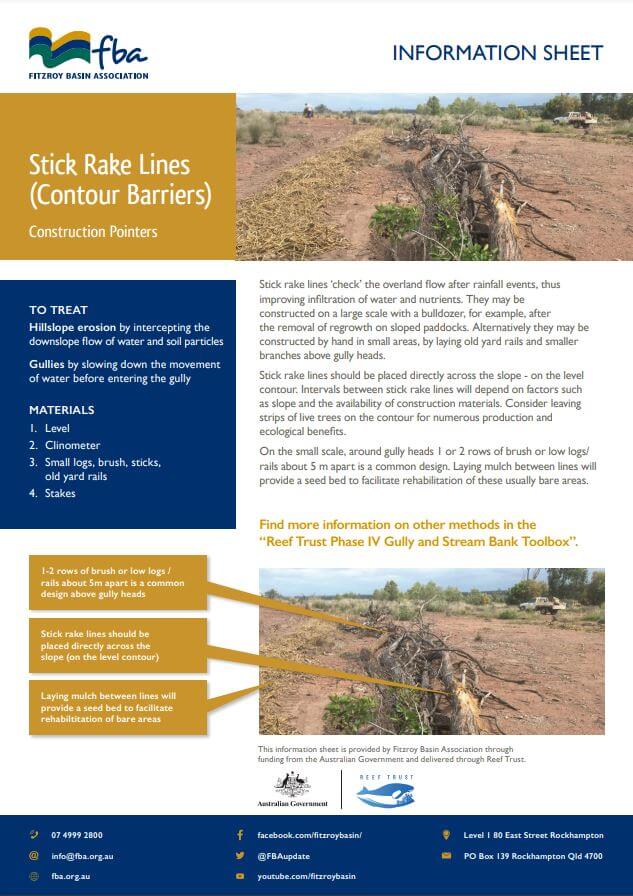
Treat hillslope erosion by intercepting the downslope flow of water and soil particles with Stick Rake Lines (aka Contour Barriers). Create your own Stick Rake Line with this handy construction pointer flyer.
11/07/2019
Porous check dams (leaky weir) educational resources
How to make Porous Check Dams
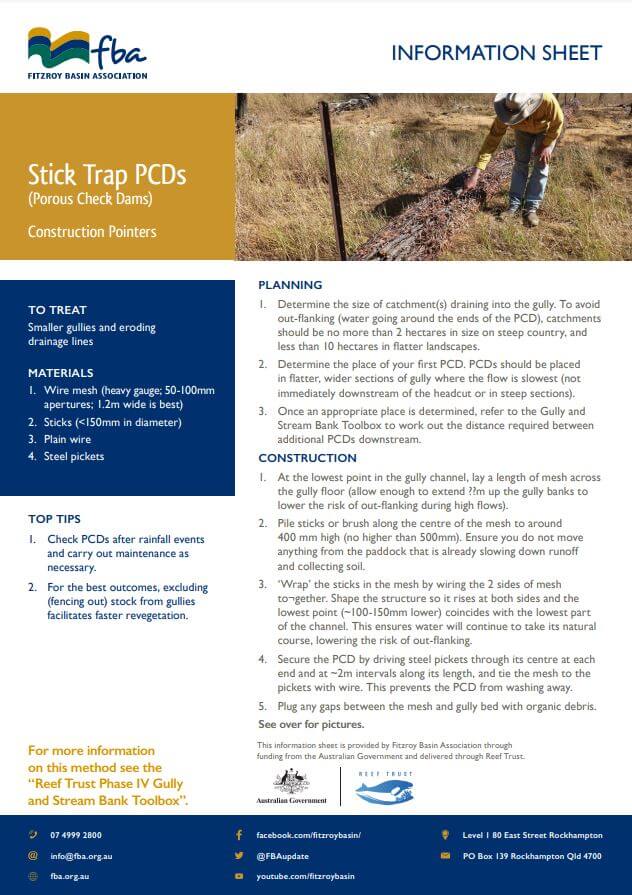
Arresting and reversing gully erosion requires resting the area and taking steps to rebuild and re-vegetate gullies. These resources explain simple and cost-efficient methods to help slow flow and start rebuilding gully floors through building Porous Check Dams (PCDs). PCDs are a low-cost and low-risk erosion control method recommended by CSIRO in their 'Gully Toolbox' kit.
11/07/2019
Free whoa-boys (check banks, cross banks or roll over banks) educational resources
How to make Whoa-boys
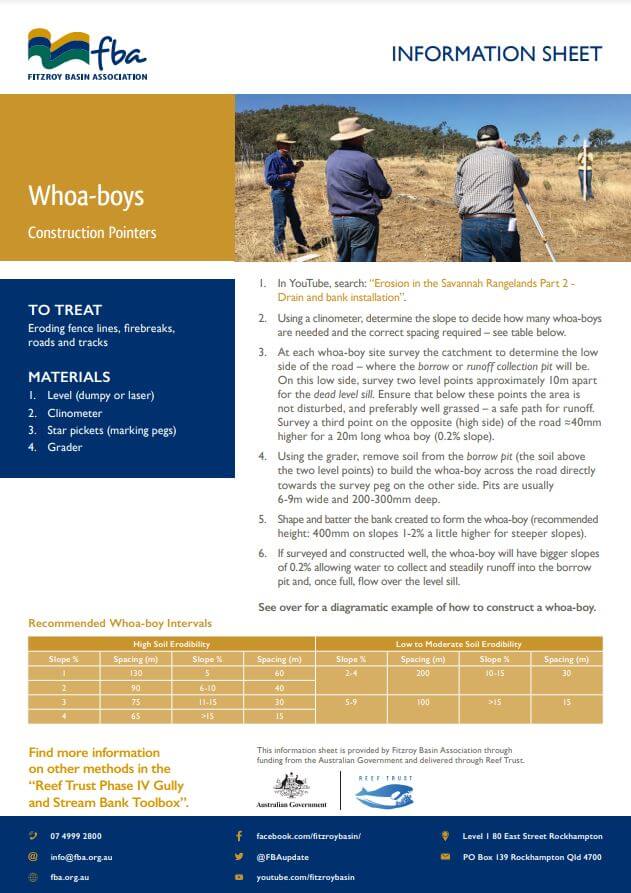
Whoa-boys (aka check banks, cross banks or roll over banks) are specially placed banks that divert water with the objective to decrease erosion and heal and hydrate the land. Learn how to make your own Whoa-boy with these resources.
11/07/2019
Rock chute case study
Raglan Station Gully Erosion Project
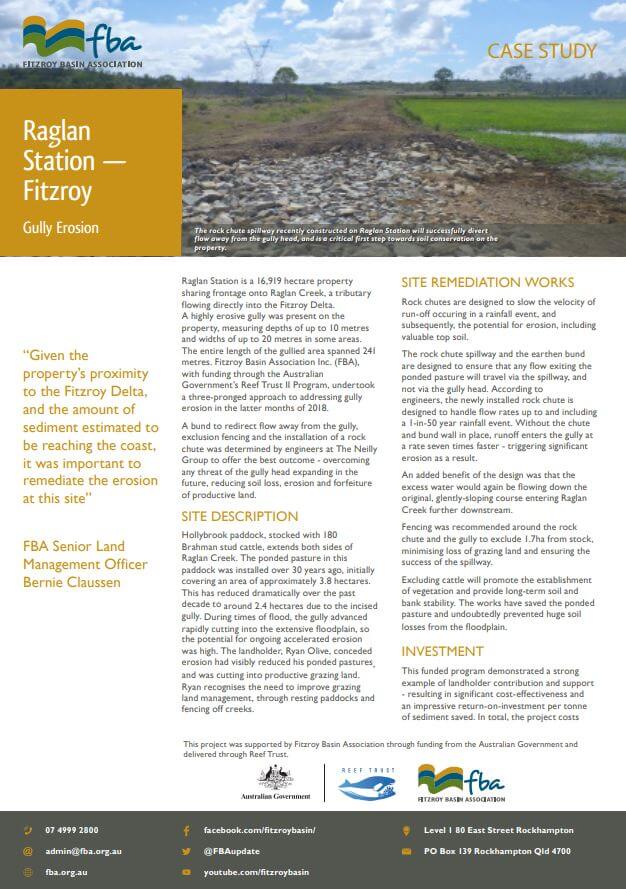
Raglan Station is a 16,919 hectare property sharing frontage onto Raglan Creek, a tributary flowing directly into the Fitzroy Delta. A highly erosive gully was present on the property, measuring depths of up to 10 metres and widths of up to 20 metres in some areas. The entire length of the gullied area spanned 241 metres. Fitzroy Basin Association Inc. (FBA), with funding through the Australian Government’s Reef Trust II Program, undertook a three-pronged approach to addressing gully erosion in the latter months of 2018.
03/07/2019
Gully Erosion Case Study
Raglan Station - Fitzroy

Raglan Station is a 16,919 hectare property sharing frontage onto Raglan Creek, a tributary flowing directly into the Fitzroy Delta. A highly erosive gully was present on the property, measuring depths of up to 10 metres and widths of up to 20 metres in some areas. The entire length of the gullied area spanned 241 metres. Fitzroy Basin Association Inc. (FBA), with funding through the Australian Government’s Reef Trust II Program, undertook a three-pronged approach to addressing
02/07/2019





